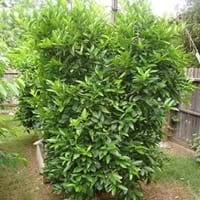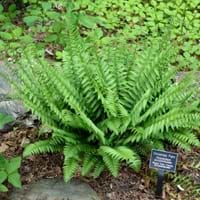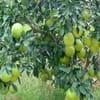Life Span
Perennial
Perennial
Origin
Southeastern Asia
North America, Northeastern United States
Types
not available
Not Available
Number of Varieties
Not Available
Habitat
Temperate Regions
Boggy areas, By seashore, Coastal Regions, Moist woods, Swamps
USDA Hardiness Zone
10-11
3-8
Sunset Zone
H1, H2, 8, 9, 12, 13, 14, 15, 16, 17, 18, 19, 20, 21, 22, 23, 24
1a, 1b, 2a, 2b, 3a, 3b, 4, 5, 6, 8, 9, 14, 15, 16, 17, 18, 19, 20, 21, 22, 23, 24
Habit
Oval or Rounded
Clump-Forming
Flower Color
White
Not Available
Flower Color Modifier
Bicolor
Bicolor
Fruit Color
Green, Yellow green
Not Available
Leaf Color in Spring
Green, Light Green
Green
Leaf Color in Summer
Green, Light Green
Green, Dark Green
Leaf Color in Fall
Green, Light Green
Green, Dark Green
Leaf Color in Winter
Light Green
Dark Green
Plant Season
Spring, Summer, Fall, Winter
Spring, Summer, Fall, Winter
Sunlight
Full Sun, Partial Sun
Full Sun, Partial shade
Growth Rate
Medium
Medium
The pH of Soil
Acidic, Neutral
Acidic, Neutral
Soil Drainage
Well drained
Average
Bloom Time
Indeterminate
Indeterminate
Tolerances
Drought
Drought, Wet Site
Where to Plant?
Container, Ground, Pot
Container, Ground
How to Plant?
Seedlings, Transplanting
Divison, Spores
Plant Maintenance
Medium
Medium
Watering Requirements
Do Not over Water, Requires regular watering
Requires a lot of watering, Requires regular watering, Requires watering in the growing season, Water Deeply
In Summer
Lots of watering
Lots of watering
In Spring
Moderate
Moderate
In Winter
Average Water
Average Water
Soil pH
Acidic, Neutral
Acidic, Neutral
Soil Drainage Capacity
Well drained
Average
Sun Exposure
Full Sun, Partial Sun
Full Sun, Partial shade
Pruning
Prune in summer, Remove damaged leaves
Remove damaged leaves, Remove dead branches, Remove dead leaves
Fertilizers
All-Purpose Liquid Fertilizer
All-Purpose Liquid Fertilizer
Pests and Diseases
Aphids, Mites, White outside
Red blotch
Plant Tolerance
Drought
Drought
Flowers
Insignificant
None
Flower Petal Number
Single
Single
Foliage Texture
Medium
Medium
Foliage Sheen
Glossy
Matte
Attracts
Birds, Butterflies
Insects
Allergy
Dental erosion
Avoid during Pregnancy, coma, Eye irritation, weakness
Aesthetic Uses
Not Used For Aesthetic Purpose
Beautification, Landscape Designing, Showy Purposes
Beauty Benefits
Not Available
Not Available
Environmental Uses
Air purification
Air purification
Medicinal Uses
Not Available
Nutrients
Part of Plant Used
Fruits
Leaves
Other Uses
Used As Food, Used in making beverages
Air freshner, Decoration Purposes, Employed in herbal medicine, Showy Purposes, Used for its medicinal properties
Used As Indoor Plant
Yes
Yes
Used As Outdoor Plant
Yes
Yes
Garden Design
Container, Edible, Fruit / Fruit Tree, Topiary / Bonsai / Espalier, Tropical
Groundcover, Mixed Border, Rock Garden, Wall
Botanical Name
CITRUS aurantiifolia 'Bearss'
POLYSTICHUM acrostichoides
Common Name
Bearss Lime, Shiraz Limoo, Tahiti Lime
Not Available
In Hindi
Shiraz Limoo
Christmas Fern
In German
Bearss Kalk
Christmas Fern
In French
Bearss chaux
polystic faux-acrostic
In Spanish
Bearss cal
Christmas Fern
In Greek
BEARSS ασβέστη
Christmas Fern
In Portuguese
Bearss cal
Christmas Fern
In Polish
bearss wapna
Christmas Fern
In Latin
bearss lime
Christmas Fern
Phylum
Not Available
Filicinophyta
Class
Not Available
Filicopsida
Order
Sapindales
Filicales
Family
Rutaceae
Dryopteridaceae
Clade
Angiosperms, Eudicots, Rosids
Not Available
Tribe
Not Available
Not Available
Subfamily
Not Available
Not Available
Number of Species
Not Available
Importance of Bearss Lime and Christmas Fern
Want to have the most appropriate plant for your garden? You might want to know the importance of Bearss Lime and Christmas Fern. Basically, these two plants vary in many aspects. Compare Bearss Lime and Christmas Fern as they differ in many characteristics such as their life, care, benefits, facts, etc. Every gardener must at least have the slightest clue about the plants he wants to plant in his garden. Compare their benefits, which differ in many ways like facts and uses. The medicinal use of Bearss Lime is Not Available whereas of Christmas Fern is Nutrients. Bearss Lime has beauty benefits as follows: Not Available while Christmas Fern has beauty benefits as follows: Not Available.
Compare Facts of Bearss Lime vs Christmas Fern
How to choose the best garden plant for your garden depending upon its facts? Here garden plant comparison will help you to solve this query. Compare the facts of Bearss Lime vs Christmas Fern and know which one to choose. As garden plants have benefits and other uses, allergy is also a major drawback of plants for some people. Allergic reactions of Bearss Lime are Dental erosion whereas of Christmas Fern have Avoid during Pregnancy, coma, Eye irritation and weakness respectively. Having a fruit bearing plant in your garden can be a plus point of your garden. Bearss Lime has showy fruits and Christmas Fern has no showy fruits. Also Bearss Lime is not flowering and Christmas Fern is not flowering . You can compare Bearss Lime and Christmas Fern facts and facts of other plants too.





